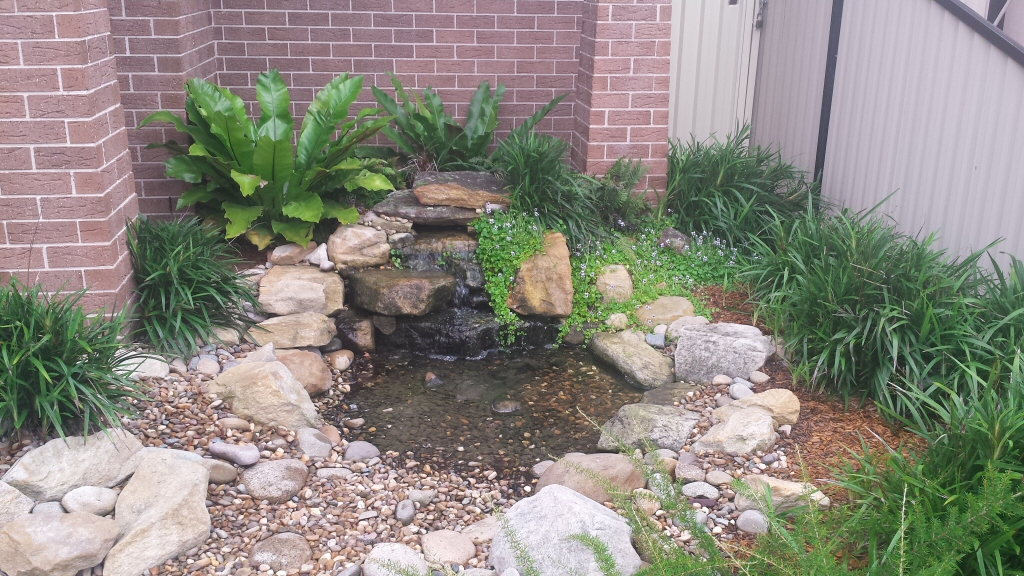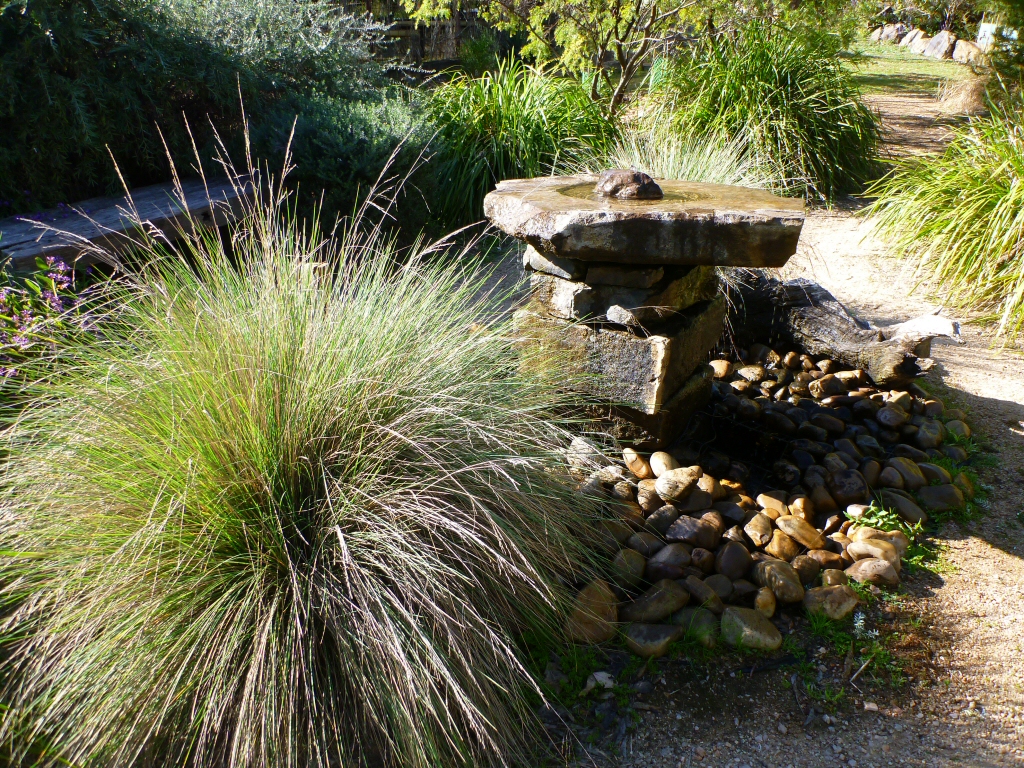Water features and native plants are a beautiful match. You can have the informal look of a billabong or a rippling creek running through a natural bush garden, through to the more formal pond, pool or water sculpture teamed with clipped and shaped plantings.
Naturalistic native landscaping for a compact area- waterfall and pond team with low maintenance plants like Alpinia caerulea, Lomandra, Dianella, lemon scented tea tree and tree ferns, by ECOlibrium Landscapes. The wooden path also serves as a bridge and viewing platform to contemplate the wildlife pond.
Talented nursery people have been breeding and selecting new forms of native plants that will compliment water features. Plants such as Dianella, Lomandra and native rushes look great with their upright habits, and small ground dwelling creatures like frogs and lizards appreciate the cover they provide. Some of the new small bottlebrush type plants, the compact wattles and kangaroo paws provide food, shelter and a perch for birds, and will frame your water feature beautifully.
A natural looking billabong garden with a restrained planting of Dianella caerulea, Viola hederacea and birds nest fern. A private tranquil area that provides water to birds and other small wildlife, as well as a lovely view. The plants are perfect to provide hiding spots for lizards and frogs. By ECOlibrium Landscapes.
Water Features Attract Wildlife
Water is a wonderful way to bring Australian native wildlife into the garden, which will help to maintain a healthy ecosystem. Birds are the most obvious visitors, and they will drink and splash about, but there are a host of other smaller things that will love your water too. Frogs and lizards appreciate water, and these small creatures help to control insect populations. I much prefer a bird or a frog to munch on a cockroach than having to blast insecticide around. Plus you have bonus bird or frog song!
Bees need to have an available source of water near their hive, and it’s a good thing to give a helping hand to our native bees so they can keep on pollinating, ensuring future generations of wild bush plants. Bees need a landing site to be able to drink….place a rock or something similar into the water if you have a deep water feature. Rocks near a pond offer hiding and sunning spots for lizards and frogs.
Water bowls don’t have to be utilitarian for wildlife, they can also look stunning. There are many choices available to match your garden style, from rustic sandstone to sleekly modern metal. A still pool of water adds a wonderful dimension to a landscape as it reflects the surroundings and gives a sparkle of light. Give some thought to what you plant nearby to create a new picture, as in the gum reflected in the spun copper bowl below.
Water feature by Mallee Design
There are some great plants that marry well with water and give shelter to your visiting creatures. Groups of clumping plants such as Dianella, Lomandras, sedges and rushes will give height and a lovely sculptural look to the landscape. These sort of plants are neat too, and tend not to drop too much organic matter into the water.
Plantings of shrubs and small trees are good near water if you want to encourage birds, so they can perch and survey the scene for any predators. Also think about ones that would double as food sources and nesting spaces too, when planning your landscaping.
A pool of water on a high pedestal, such as the one above in a garden by Mallee Design, will deter wandering cats and dogs to a degree.






